Rebuilding the front forks was necessary due to the oil seals leaking. New fork seals and dust caps were installed, oil replaced with Motul 15w 'Heavy' and fork caps replaced with 'KKK PRODUCT' preload adjusters. I'll be adjusting the preload again once I've got the bike up and running.
☆PROCESS☆
With the oil drained from the fork, a 17mm hex socket loosens the fork cap to which the spacer, spring seat, and fork spring removes from the inside of the stanchion.
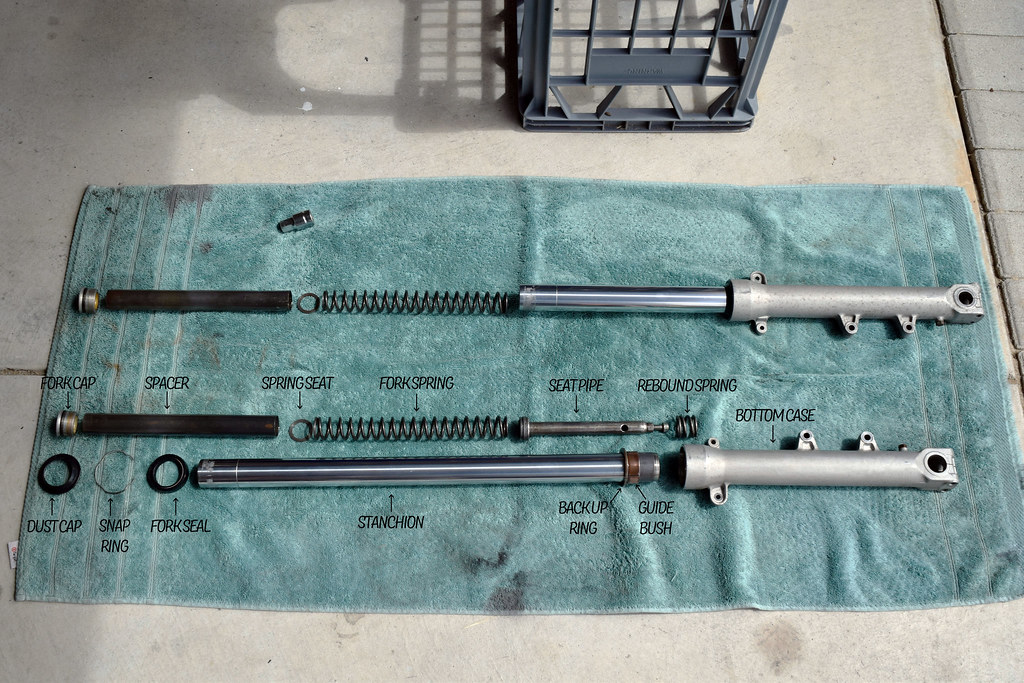 |
| Both forks disassembled. Top fork as described above, bottom fork fully disassembled and labeled |
Gently prying the dust cap from the bottom case with a screw driver allows the snap ring on the outside of the fork seal to be removed.
Unseating the fork seal requires removing the seat pipe from the inside of the bottom case, this is loosened with a 6mm hex socket at the underside of the fork. Due to the seat pipe being able to spin freely while loosening, pressure needs to be placed on the seat pipe from the inside the stanchion; a broom with a rubber stub on the end works well. The rebound spring sits under the seat pipe and removes with it too.
 |
| 6mm hex socket attached to seat pipe bolt |
Pulling the stanchion away from the bottom case causing it to 'top out' repeatedly against the fork seal unseats the guide bushing, backup ring and fork seal; allowing the stanchion to be removed.
At this stage the fork is completely disassembled so components can be wiped clean and checked for damage.
Sliding the stanchion back inside the bottom case, two screw drivers either side of the stanchion can be used to reseat the guide bush; one to apply slight pressure to the bush and one to lightly tap the otherside into place. Again lightly tapping the guide bush while rotating will seat the bush into the bottom case.
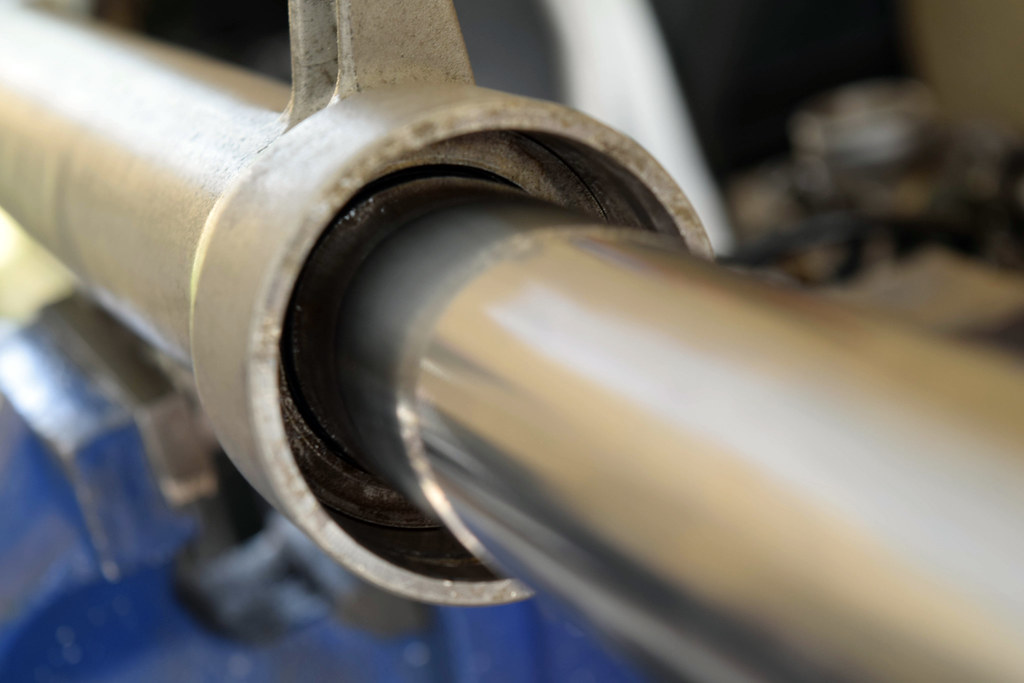 |
| Backup ring in place |
Vinyl tape wrapped around the lip of the stanchion ensures no damage can be caused while the new replacement fork seal is slipped on. A small amount of fork oil applied to inner surface of the fork seal and grease to the outside and inner edge avoids causing damage to the rubber while fitting too. Note the side of the fork seal that has writing must face upwards.
Placing the old fork seal over the top of the new replacement, a length of 40mm PVC pipe over the stanchion and a rubber mallet can be used to reseat the fork seal evenly into the bottom case. Again, by using the old fork seal over the top this protects the new fork seal from damage. It's important to note the fork seal sits behind the trench intended for the snap ring when fully seated, then obviously the snap ring can be installed following the dust cap.
 |
| Fork seal and snap ring installed |
Placing the seat pipe back inside the stanchion, the seat pipe bolt on the underside of the fork can be tightened to 0.5 ~ 2.0kg-m. The fork spring, spring seat and spacer are then placed back into the stanchion followed by 385ml of 15w fork oil. Lastly, refitting and tightening the fork cap to 1.5 ~ 3.0kg-m.
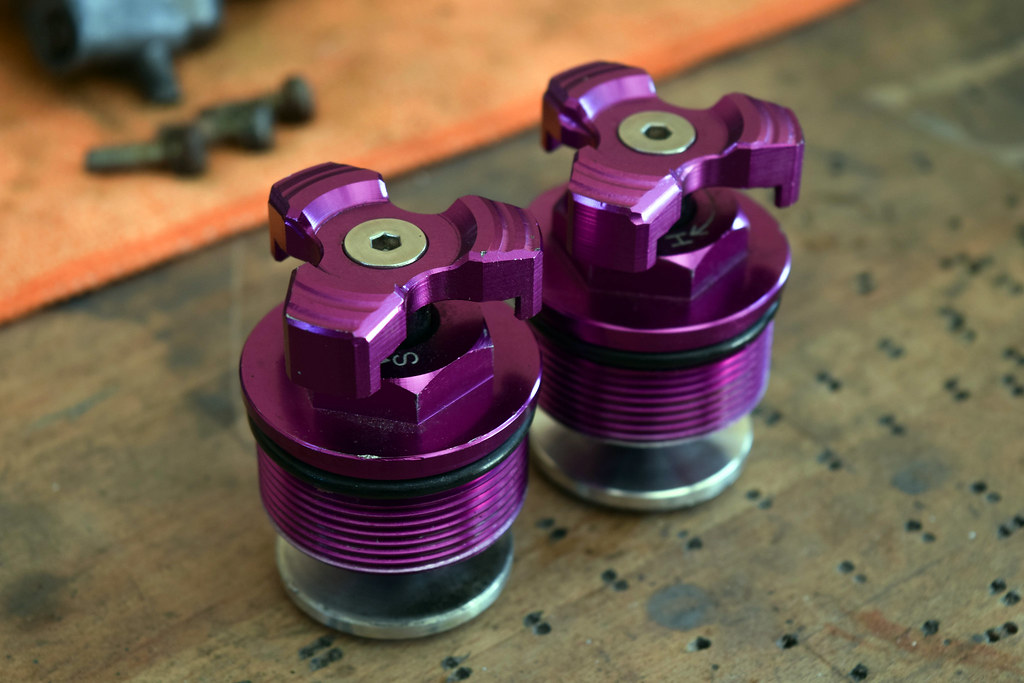
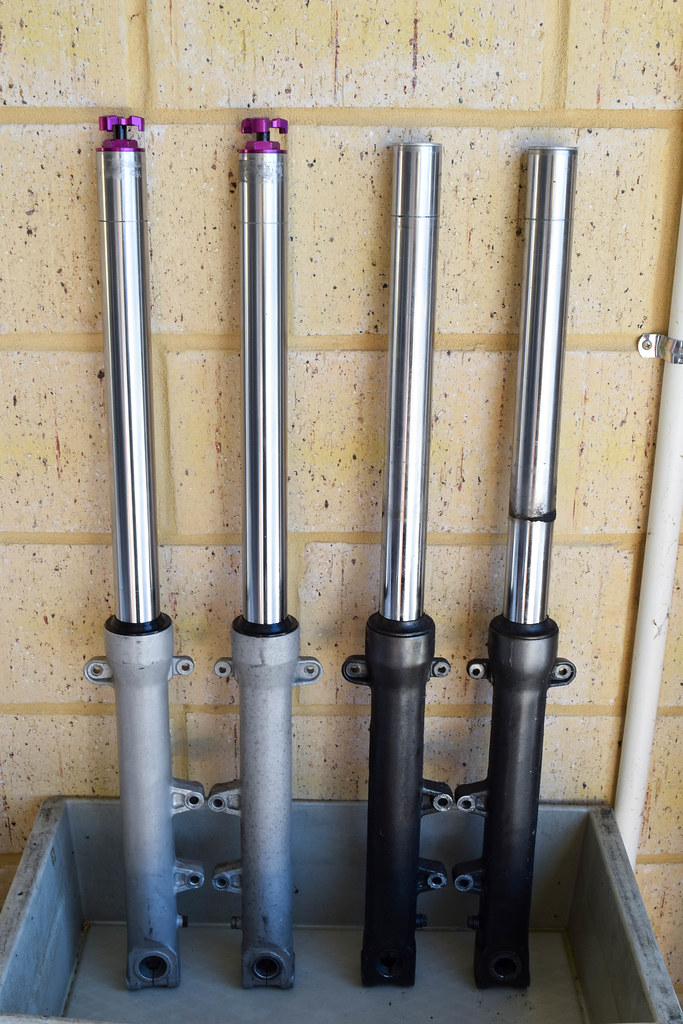
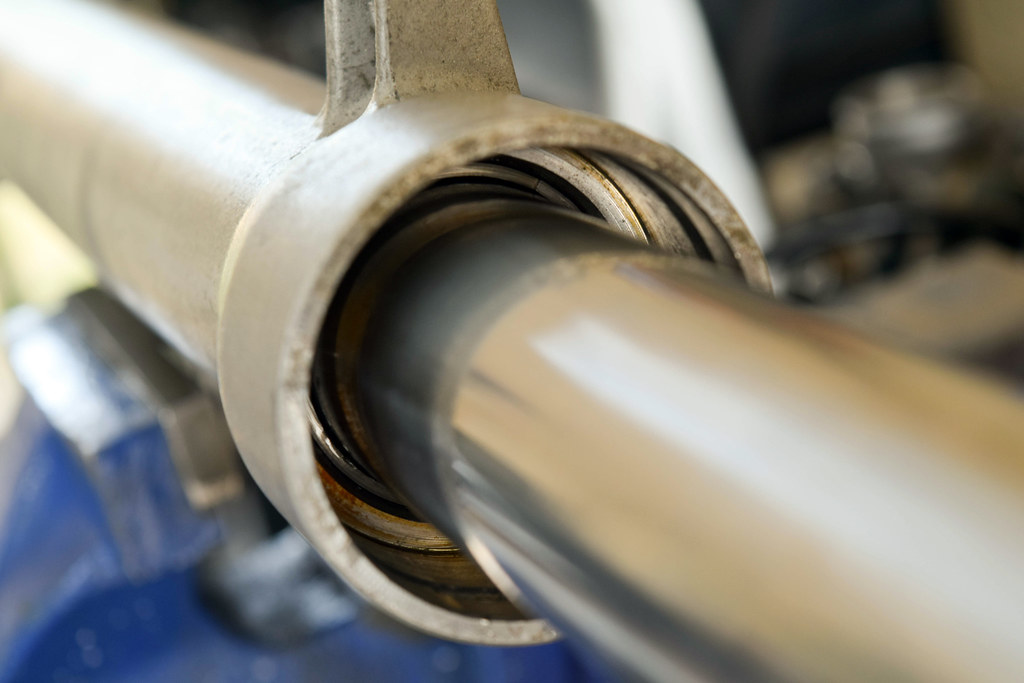
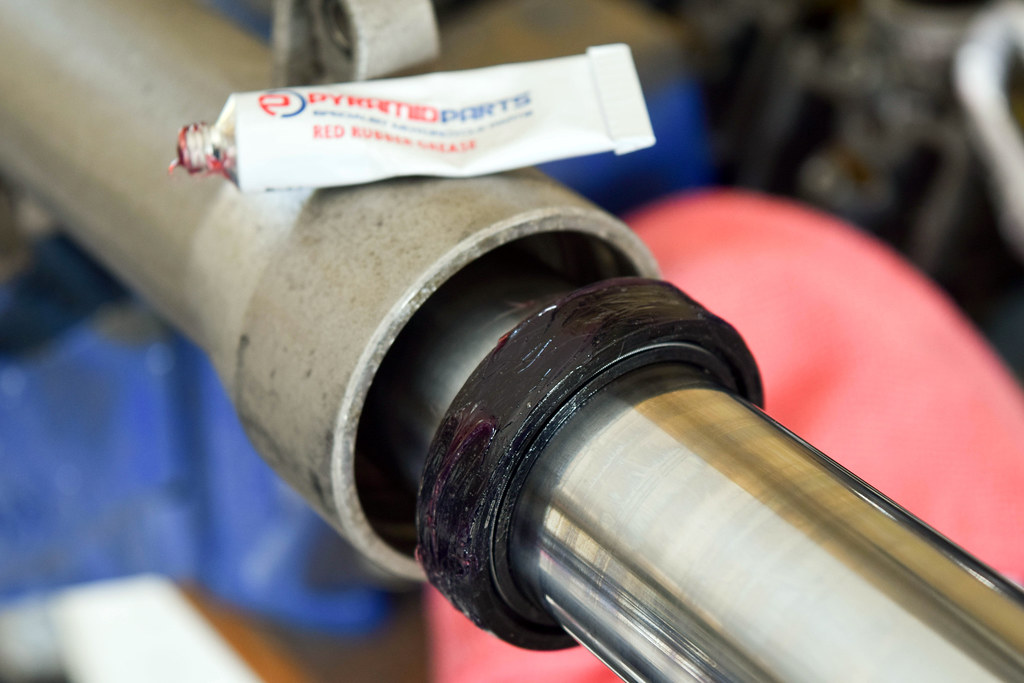
No comments:
Post a Comment